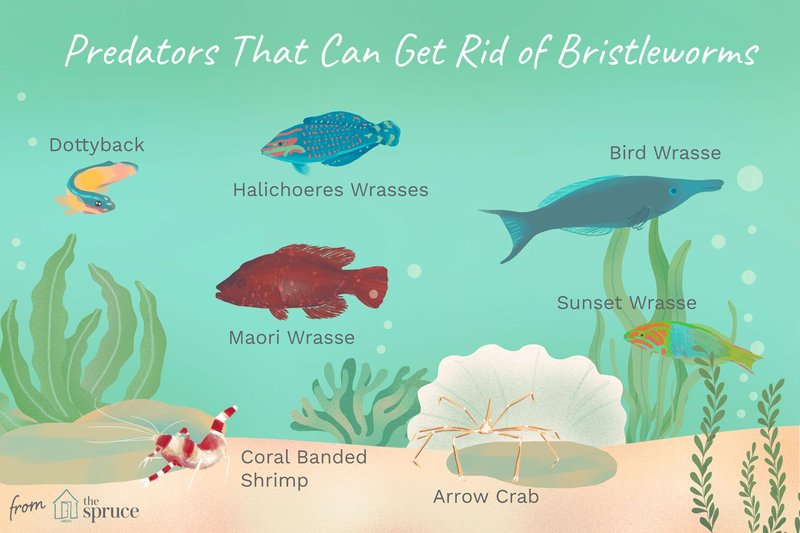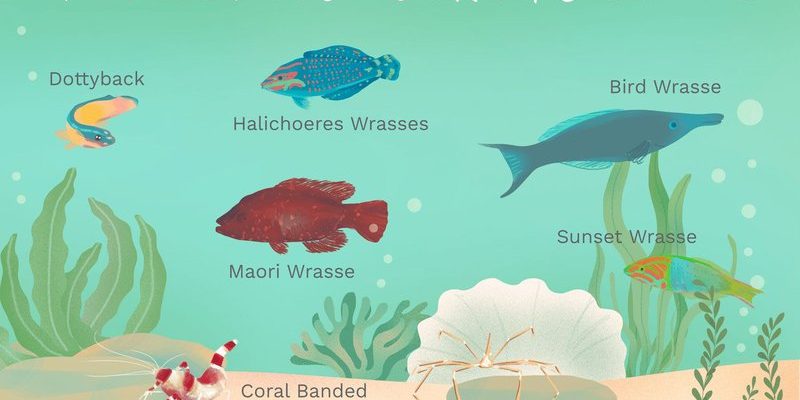
Understanding how to control these pesky creatures naturally can save you a lot of time, effort, and money. It’s a bit like having a helpful roommate who takes care of those annoying tasks you’d rather avoid. Let’s dive into how these natural predators can safely and effectively manage your bristle worm population.
Why Choose Natural Predators?
You might be wondering why you should go the natural route for controlling bristle worms instead of using chemicals. The truth is, using natural predators is often safer for the environment, your plants, and even the fish in your aquarium. Chemical treatments can sometimes have nasty side effects, such as harming beneficial microorganisms or other creatures in your ecosystem.
Using natural predators is like having a balanced diet; it promotes health without introducing harmful ingredients. Getting the right balance can create a thriving environment where all creatures coexist peacefully. This method also promotes a more sustainable way of gardening or keeping aquariums, giving you the satisfaction of nurturing a natural ecosystem.
Key Natural Predators for Bristle Worms
Now that we’ve covered why natural predators are the way to go, let’s get into the specifics. Here are some of the top contenders for managing your bristle worm problem:
1. Wrasses
- What they are: Wrasses are colorful, active fish known for their voracious appetites.
- How they help: They hunt and consume bristle worms and other pests, keeping their numbers down.
- Where to find: They’re widely available at fish stores, so you can easily add them to your aquarium.
Wrasses are pretty fun to watch, too. They dart around in search of food, and their active behavior adds a lively touch to your tank. Just be sure to pick the right species, as some can be a bit more aggressive than others.
2. Gobies
- What they are: Gobies are small, peaceful fish that often hang out near the substrate of the tank.
- How they help: They sift through the sand, eating bristle worms and other detritus as they go.
- Where to find: Look for them in pet stores or online retailers.
Adding gobies can also promote a cleaner tank environment since they’ll consume waste while helping control those pesky worms. It’s a win-win!
Invertebrates: Nature’s Cleanup Crew
3. Sea Stars
- What they are: Sea stars, or starfish, are fascinating creatures with five arms that can reach into tight spaces.
- How they help: They are known to eat bristle worms, particularly when they’re well-fed and healthy.
- Where to find: Local marine shops often carry several species.
Placing a few sea stars in your aquarium can add a unique touch while they do their job of controlling bristle worm populations. Keep in mind that they require specific conditions to thrive, so make sure you research which species is best suited for your setup.
4. Peppermint Shrimp
- What they are: These bright red shrimp are more than just a pretty face; they’re also excellent scavengers.
- How they help: They have a taste for bristle worms, making them effective little hunters.
- Where to find: Available in most aquarium supply stores.
Peppermint shrimp also add a dynamic visual element to your tank. Watching them scuttle around can be quite entertaining, and they help keep your environment clean too!
How to Introduce Natural Predators
Introducing natural predators to your tank or garden isn’t just a matter of tossing them in and hoping for the best. It’s like welcoming a new roommate—you want to make sure the vibe is right.
1. Assess Your Environment
Before bringing in any new creatures, assess the current state of your aquarium or garden. High levels of nitrates and poor water quality can stress new animals, making them less effective at doing their job.
2. Research Compatibility
Make sure that the natural predators you choose are compatible with your other plants or fish. Some species may not get along well, so do a little homework to ensure a happy coexistence.
3. Monitor Their Impact
After introducing the predators, keep an eye on their interactions. If they seem to be doing their job, great! If not, you might need to adjust your approach or consider adding different species.
Benefits Beyond Bristle Worm Control
Natural predators do more than just manage bristle worm populations; they contribute to a healthier ecosystem overall. Their presence can lead to:
- Improved Biodiversity: A variety of species can promote a healthier environment.
- Natural Cleanup: Predators often help manage other pests, too.
- Reduced Chemical Use: Going natural decreases the need for chemical interventions, leading to a safer habitat.
Whenever you introduce any new species, you not only control pests but also create a thriving ecosystem that mimics nature. That balance can lead to happier plants and fish, which is what we all want.
Common Challenges and How To Overcome Them
With any pet, plant, or creature, there can be challenges. Here are some common issues you might face and how to deal with them:
1. Overpopulation
Natural predators can sometimes multiply quickly. Keep an eye on their numbers and consider adjusting your ecosystem if they begin to overwhelm your space. Just like roommates, sometimes they need a gentle nudge to keep the balance.
2. Preference for Other Foods
Not all natural predators will immediately go after bristle worms. If they seem to prefer other food sources, you may need to adjust their diet or provide a little extra motivation.
3. Water Quality Issues
Poor water quality can affect the health of both your predators and your existing aquatic life. Regular maintenance and testing can help keep everyone happy and healthy.
Controlling bristle worms naturally can be a fulfilling and effective way to maintain a healthy ecosystem in your aquarium or garden. By introducing natural predators like wrasses, gobies, sea stars, and peppermint shrimp, you not only tackle the problem but also enhance the beauty and balance of your environment.
So, the next time you see those pesky bristle worms, remember that nature has a way of sorting things out. With a little patience and the right approach, you can create a thriving habitat for all its creatures, big and small. Embrace the natural way, and watch your ecosystem thrive!

